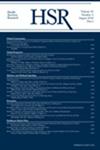To examine differential changes in receipt of surgery at National Cancer Institute (NCI)-designated comprehensive cancer centers (NCI-CCC) and Commission on Cancer (CoC) accredited hospitals for patients with cancer more likely to be newly eligible for coverage under Affordable Care Act (ACA) insurance expansions, relative to those less likely to have been impacted by the ACA.
Pennsylvania Cancer Registry (PCR) for 2010–2019 linked with discharge records from the Pennsylvania Health Care Cost Containment Council (PHC4).
Outcomes include whether cancer surgery was performed at an NCI-CCC or a CoC-accredited hospital. We conducted a difference-in-differences analysis, estimating linear probability models for each outcome that control for residence in a county with above median county-level pre-ACA uninsurance and the interaction between county-level baseline uninsurance and cancer treatment post-ACA to capture differential changes in access between those more and less likely to become newly eligible for insurance coverage (based on area-level proxy). All models control for age, sex, race and ethnicity, cancer site and stage, census-tract level urban/rural residence, Area Deprivation Index, and year- and county-fixed effects.
We identified adults aged 26–64 in PCR with prostate, lung, or colorectal cancer who received cancer-directed surgery and had a corresponding surgery discharge record in PHC4.
We observe a differential increase in receiving care at an NCI-CCC of 6.2 percentage points (95% CI: 2.6–9.8; baseline mean = 9.8%) among patients in high baseline uninsurance areas (p = 0.001). Our estimate of the differential change in care at the larger set of CoC hospitals is positive (3.9 percentage points [95% CI: −0.5-8.2; baseline mean = 73.7%]) but not statistically significant (p = 0.079).
Our findings suggest that insurance expansions under the ACA were associated with increased access to NCI-CCCs.



